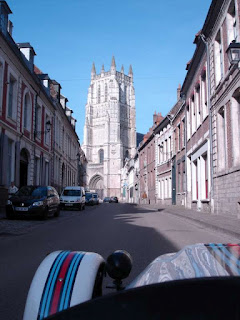Some kit cars have bonnet scoops, some have louvers, some even have NACA ducts, but the Avon has no openings as standard. For most of the year this is not a problem, but I had noticed that during the summer months, there can be quite a big heat build up and the top of the bonnet is very warm to the touch.
So I weighed up a few options, including fitting ready made grilles, but in the end I decided upon some simple holes. I used hole saws in the cordless drill with the torque turned right down. Then, once the holes were done, I glued black mesh to the inside of the bonnet with Grip-Fill. I'd previously had success using this on the inside of the GRP bodywork to affix things, such as cable tie mounts.
Here are the four holes that allow escape of some of the heat from the exhaust headers:
So I weighed up a few options, including fitting ready made grilles, but in the end I decided upon some simple holes. I used hole saws in the cordless drill with the torque turned right down. Then, once the holes were done, I glued black mesh to the inside of the bonnet with Grip-Fill. I'd previously had success using this on the inside of the GRP bodywork to affix things, such as cable tie mounts.
Here are the four holes that allow escape of some of the heat from the exhaust headers:
And here are the two larger holes centered on the midpoint between the two K&N filters. As well as allowing cooler fresh air in to the engine, they also allow out of the engine bay that little extra induction noise!
Overall, a simple modification. The engine bay definitely runs a little cooler and in my opinion its added some additional aesthetic interest.














-1024.jpg)

-1024.jpg)


























